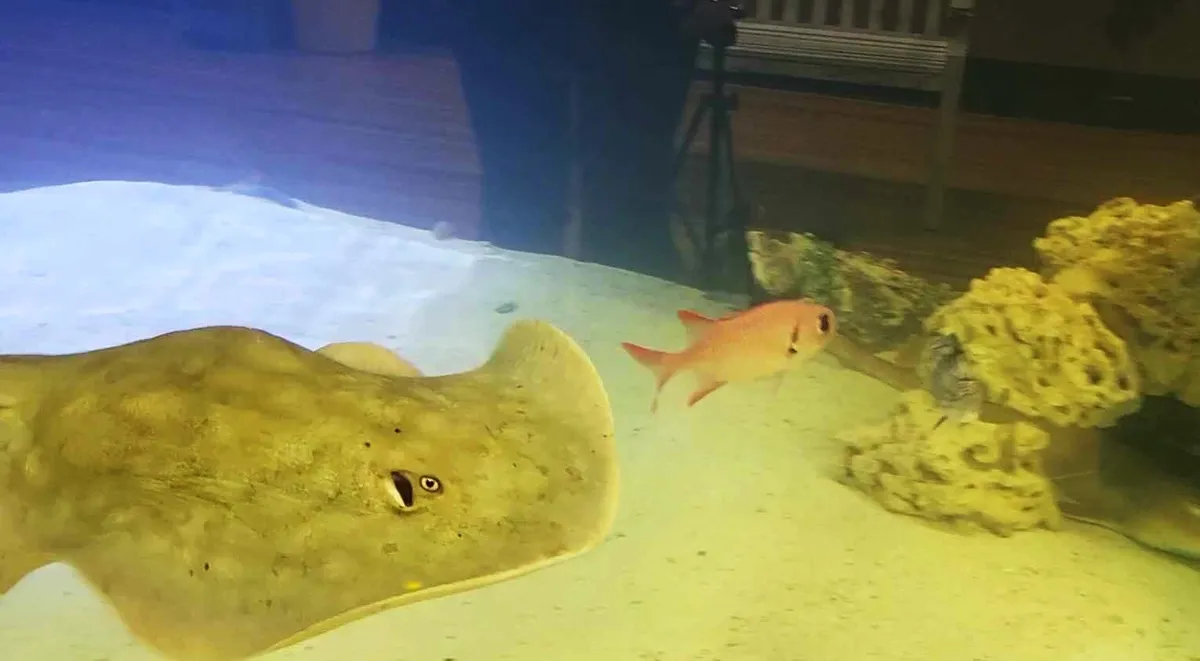Aquariums are often places of wonder and learning, where visitors can encounter the mysteries of marine life up close. One such mystery currently captivating audiences around the world is unfolding at the Aquarium and Shark Lab by Team ECCO in Hendersonville, North Carolina. Charlotte the Stingray, a resident of the aquarium, is experiencing an extraordinary and rare type of pregnancy that has drawn significant attention from both the scientific community and curious visitors. This article will delve into the fascinating story of Charlotte the stingray, exploring her unique pregnancy through parthenogenesis, the implications for marine biology, and the public’s response to this remarkable event.
Meet Charlotte the Stingray
A Beloved Resident of Team ECCO
Charlotte is no ordinary stingray. As a long-time resident of the Aquarium and Shark Lab by Team ECCO, she has become a favorite among visitors and staff alike. Her playful nature and interactive behavior have endeared her to many, making her the perfect ambassador for marine education and conservation.
The Stingray Species
Stingrays are cartilaginous fish related to sharks. They are known for their flat bodies and long, whip-like tails that can carry venomous barbs. These fascinating creatures are found in warm, coastal waters around the world, where they often bury themselves in the sand to hunt for food.
Charlotte’s Extraordinary Pregnancy
What is Parthenogenesis?
Charlotte’s pregnancy is not just rare; it’s a marvel of nature. She is undergoing parthenogenesis, a form of asexual reproduction where an egg develops into an embryo without being fertilized by sperm. This phenomenon is extremely rare in vertebrates and has mostly been observed in species like certain reptiles, birds, and fish.
How It Was Discovered
The staff at the Aquarium and Shark Lab by Team ECCO noticed something unusual about Charlotte. Despite not having had contact with a male stingray for some time, she was showing signs of pregnancy. Upon further investigation, it was confirmed that Charlotte was indeed pregnant through parthenogenesis, an astounding discovery that has since captivated scientists and the public alike.
The Science Behind Parthenogenesis
Understanding Asexual Reproduction
In sexual reproduction, genetic material from two parents combines to create offspring with a mix of traits from both. In parthenogenesis, however, the offspring are produced by a single parent, resulting in a genetic clone of the mother. This form of reproduction is advantageous in environments where mates are scarce, allowing species to continue without the need for fertilization.
Implications for Marine Biology
Charlotte’s case provides a unique opportunity to study parthenogenesis in marine animals. It raises questions about how common this reproductive strategy might be among stingrays and other cartilaginous fish. Researchers are keen to learn more about the genetic and environmental factors that trigger parthenogenesis and what it might mean for the conservation of these species.
Charlotte’s Health and Progress
Monitoring Her Condition
Since the discovery of her pregnancy, Charlotte has been closely monitored by the aquarium staff. Regular check-ups ensure she remains healthy and that her pregnancy progresses smoothly. So far, Charlotte has shown a great appetite and continues to interact actively with divers and visitors.
Public Engagement and Support
The aquarium has shared Charlotte’s journey on social media, attracting a wave of interest and support from around the globe. Videos and updates about her condition have helped raise awareness about stingrays and the broader implications of her unique pregnancy.
Stingrays and Parthenogenesis in the Wild
Natural Occurrences
While parthenogenesis is rare, it is not entirely unheard of in the wild. Some species of sharks, for example, have been documented reproducing asexually. These instances often occur in environments where the population of males is significantly lower, allowing females to reproduce without mates.
Adaptive Advantages
Parthenogenesis can be an adaptive strategy for survival in challenging environments. For species facing declining populations or isolated habitats, this form of reproduction ensures that they can still produce offspring and maintain their numbers.
Charlotte’s Legacy
Advancing Scientific Knowledge
Charlotte’s pregnancy is a significant contribution to scientific understanding of marine biology and reproduction. Researchers are using this opportunity to gather data that could lead to breakthroughs in the study of parthenogenesis and its potential applications in conservation.
Inspiring Conservation Efforts
Charlotte’s story also highlights the importance of aquariums and marine research centers in conservation efforts. By providing a safe environment for marine animals and facilitating groundbreaking research, these institutions play a crucial role in protecting our oceans and the diverse life they support.
Public Fascination and Education
Engaging the Community
Charlotte’s journey has captured the imagination of the public, drawing attention to the wonders of marine life and the importance of preserving it. The Aquarium and Shark Lab by Team ECCO has used this opportunity to educate visitors about stingrays, their habitats, and the challenges they face in the wild.
Interactive Learning Experiences
Visitors to the aquarium have the chance to see Charlotte up close and learn about her unique pregnancy through interactive exhibits and educational programs. These experiences not only inform but also inspire a new generation of marine biologists and conservationists.
Conclusion
Charlotte the stingray’s extraordinary pregnancy through parthenogenesis is a testament to the incredible diversity and adaptability of life in our oceans. Her story has not only fascinated the public but also provided valuable insights for the scientific community. As we continue to learn from Charlotte and other marine creatures, it is essential to support conservation efforts and promote awareness about the importance of protecting our marine ecosystems.
Charlotte’s journey is far from over, and as she continues to thrive, she serves as a reminder of the wonders of the natural world and the vital role that research and conservation play in preserving it for future generations.







